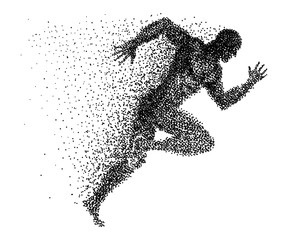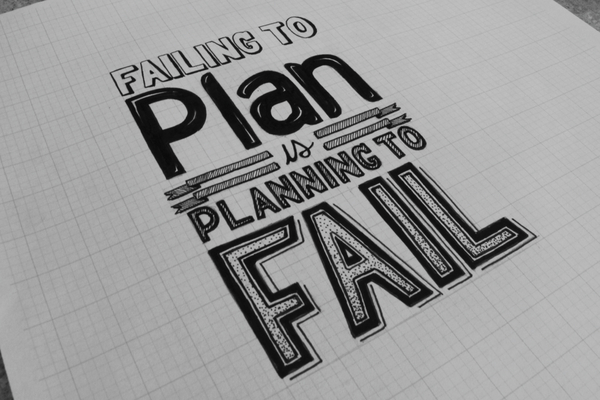As we’ve all heard many times, “Failing to plan is planning to fail.” So just what does effective planning look like? How do individual session relate to each other, or to the aim of the season overall? How can coaches plan effectively?
Athletic development relies on a plan, so does good technical coaching. Really when we talk about “planning” we are talking about a few different types of planning:
- Multiple years (Quadrennial etc.)
- Annual plan (Macrocyle)
- Monthly plan (Mesocycle)
- Weekly plan (Microcycle)
- Individual session plan (Individual training units)
The process of planning is really an exercise in reverse engineering. That is, in order to establish the content of the individual training units, you need to work from the bigger picture of what the long term goal is (Multiple years) and then work backwards… Maybe you are operating as a coach in a club without a multiple year plan for athlete development? In which case, you may need to create your own vision.

Step 1 – What is your why?
So what is your big picture? Are you simply concerned about the result this weekend, or are you concerned with creating athletes with a full technical skill set, high performance habits and athleticism to boot? I have discussed beforehand, the notion of creating a full toolbox of athletic movements from which an athlete can draw from as necessary in the future. I discussed this concept a little in a previous post The Toolbox Method.
You could operate the same philosophy in technical coaching – coaching your athletes to have a full skillset for future use. Or you might be more concerned with winning a state championship, or helping an athlete earn a scholarship. Either way in order to measure your own success as a coach, you need to pin your colours to the mast and decide what the outcome your are hoping to reach is. This is your long term aim and will determine the direction of your coaching. It will also determine how you view the athletic performance in a week, in a month or in a year’s time.

Step 2 – Chunking it
So once you have identified your overarching aim, whether it is resides at the end of this month, year or years ahead, the next step is to break it down. As the saying goes, “How do you eat an elephant? One bite at a time.”
What does this look like? In my example, my long term aim was to help athletes build a skillset. I then chunked this further into a list of the exact motor performance I wanted. For a technical coach this might be a list of:
- the ideal technical points of a golf swing
- a progressively decreasing sprint time/50m butterfly
- gradual increase in tactical understanding or difficulty
- increasingly difficult gymnastic routines
Can you break this down further. What would the ideal performance look like in 4 years time? Can you then break it down into what that looks like in 3 years, 2 years, 1 year? How would you measure your athlete/s progress towards this performance to ensure they are on track?
Can you break these down even further to the end of this year? To the end of each month? Once you have this down on paper, you have the framework you are going to work to. Your aims for this week, this month, this year and so on…This will look different for each and every sport and desired outcome. Here’s a basic example. Say my goal in athletic development is a barbell backsquat to full depth for 10 reps within 6 months. Joining the dots might look like this:
Month 1: Bodyweight squat to a bench/chair
Month 2: Bodyweight squat to full range of motion
Month 3: Goblet squat to full range
Month 4: Barbell front squat to full range
Month 5: Barbell backsquat to full range
Month 6: Barbell backsquat to full range for 10 reps
Thus I now have an aim for each month, with clear progression toward my end goal at month 6. I can also track the athlete’s progress based on whether they are meeting the competencies laid out at the end of each month. What does this look like for your athletes in your sport?
The outcomes you have selected will then determine the training content for each month. Again, each training session will build cumulatively toward the desired aim at the end of each month.

Step 3 – Join the dots
Now it’s time to join the dots or fill in the blanks. You now know what you want to see at each point in your athlete’s journey, so as a coach what is the key content you need to coach the athlete at each stage? So in my example given above, in order to achieve the outcome for Month 1, I am going to coach:
- What a squat is, desired depth
- Key technical coaching points
- Gradual progression in practice (eg. 2 x 10reps, 3 x 8 reps, 3 x 10 reps, 4 x 12 reps)
In my second month I would then progress onto increasing the range of motion desired and continue to increase the progression in practice etc. In this manner I can gradually progress through each month working toward my desired outcome, ultimately reaching my overall goal at month 6.
What does this process look like for you and the skill/ability you selected? What is the content and progression of your sessions in week 1, 2, 3 and 4? Or month 1 and 2? This will help you plan out just what should be in your sessions and why…
In the next post, I’ll discuss how to have a plan but maintain flexibility, in order to be reactive to the training process itself. In the meantime, why not comment, or share this post, or head to Facebook to stay up to date with the latest content!
Are you a grassroots youth sport coach or PE teacher who wants to improve the athleticism of your athletes?? Check out our Fundamental series athletic development programs here.

